Welcome to the delicious world of Laphet, a unique and flavorful pickled tea leaf condiment that is an integral part of Burmese cuisine.
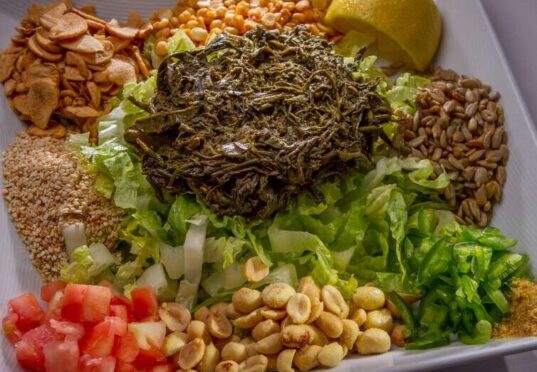
If you’re a foodie, then you’ve probably heard of this delightful and tangy condiment that is used to spice up a variety of dishes.
In this post, we will explore the many dimensions of laphet, from its taste and meaning to its ingredients and benefits. We will take a deep dive into the world of laphet and discover what makes it so special.
If you are looking for a step-by-step of a traditional Laphet Recipe, Click Here.
What Is Laphet?
But what is laphet? Simply put, it’s tea leaves that have been fermented and pickled with a variety of spices, including garlic, chilli, and ginger.
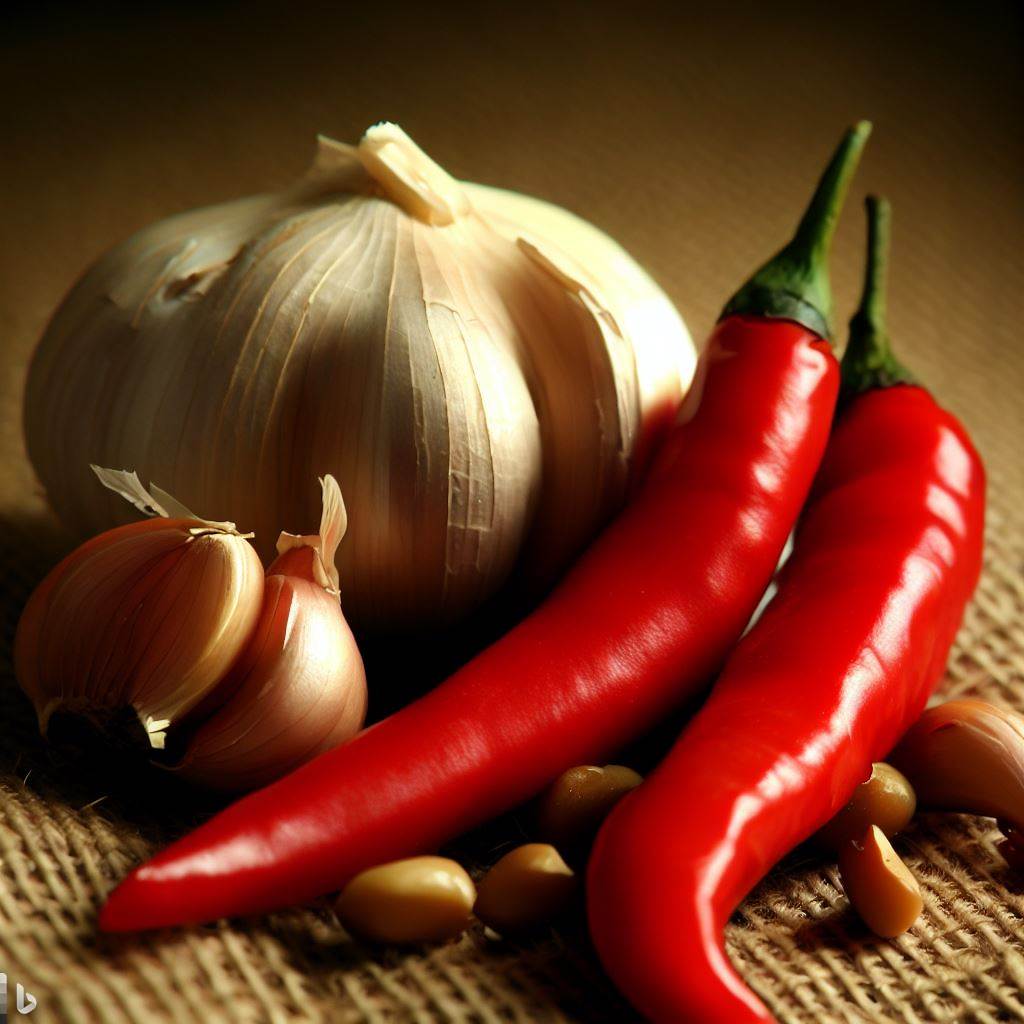
The result is a tangy, slightly bitter, and intensely flavorful condiment that is used in a wide range of Burmese dishes.
So why write about laphet?
The answer is simple: it’s a unique and fascinating condiment that has a rich cultural history and a range of health benefits.
By exploring the taste, meaning, ingredients, and benefits of laphet, we can gain a deeper understanding of this beloved Burmese condiment.
In the following sections, we will take a closer look at the taste of laphet, its cultural significance, its ingredients and preparation process, and its potential health benefits.
So grab a cup of tea (or laphet, if you have it) and join us on this journey into the world of Burmese cuisine.
What does laphet taste like?
Laphet is a truly unique condiment that is bursting with flavour. It has a distinct tangy, slightly bitter taste that can take some getting used to, but once you acquire the taste, you’ll be hooked.
Flavour and texture
The texture of laphet is also unique, with the pickling process giving the tea leaves a slightly chewy and crunchy texture.
How laphet is typically served
In Burmese cuisine, laphet is typically served as part of a dish known as laphet thohk, which translates to “tea leaf salad”.
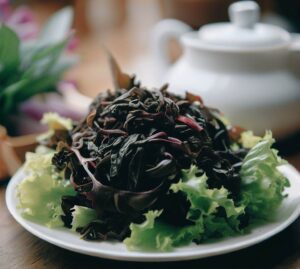
This dish consists of a mixture of laphet, tomatoes, peanuts, fried garlic, and other ingredients and is a beloved staple of Burmese cuisine.
Laphet is also commonly used as a seasoning for other dishes, adding a burst of tangy flavour to soups, stews, and curries.
If you’re new to laphet, it can be a bit overwhelming at first. But trust us, once you start to appreciate the complex and nuanced flavours of this delicious condiment, you’ll never look back.
What is the meaning of laphet?
In Burmese cuisine and society, laphet holds a special place.
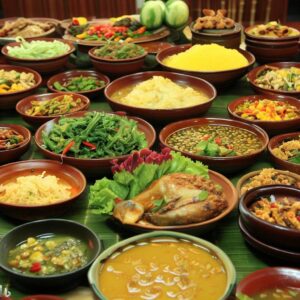
It is a beloved condiment that is steeped in cultural significance and tradition.
In fact, laphet thohk is often served at weddings, funerals, and other important events as a symbol of community and shared experience.
Traditionally, laphet was also believed to have medicinal properties and was used to treat a variety of ailments.
While these claims have not been scientifically proven, there is no doubt that laphet holds a special place in Burmese culture and history.
What is laphet made of?
To make laphet, tea leaves are first picked and then allowed to wither in the sun.
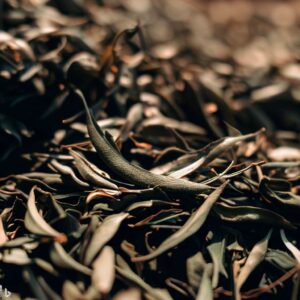
After this, the leaves are steamed and then mixed with a variety of spices, including garlic, ginger and chilli.
The leaves are then tightly packed into a jar or crock and left to ferment for several months.
During the fermentation process, the tea leaves develop their unique flavour and texture, and the pickling process preserves them for long-term storage.
Once the fermentation process is complete, the laphet can be enjoyed on its own or used as a seasoning for other dishes.
There are also regional variations in the preparation of laphet, with some regions using different spices or preparation techniques to create their own unique take on this beloved condiment.
What is the benefit of laphet?
While laphet is primarily enjoyed for its unique flavour and cultural significance, it may also offer some potential health benefits.
For example, some studies suggest that the antioxidants found in tea may help reduce inflammation and improve heart health.
However, it’s important to note that laphet is typically consumed in small amounts as a condiment and should not be relied upon as a sole source of nutritional benefits.
Additionally, some people may experience digestive discomfort or other adverse effects from consuming laphet, particularly if they are sensitive to spicy or fermented foods.
Overall, laphet is a fascinating and unique condiment that offers a window into the rich cultural history of Burmese cuisine.
Whether you’re a seasoned laphet lover or a newcomer to this beloved condiment, there’s no denying the complex and nuanced flavours that make it such a special part of Burmese culinary tradition.
Conclusion:
We had explored the world of laphet, a pickled tea leaf condiment that is an integral part of Burmese cuisine and culture.
We have discussed its taste, meaning, ingredients and benefits, and learned how it is traditionally served and consumed in Myanmar.
Laphet has a unique flavour profile that combines sour, bitter, and slightly sweet notes, along with a crunchy texture.
It is often paired with spicy, savoury dishes and can be used to add a pop of flavour to salads, soups, and curries
Beyond its culinary uses, laphet holds a special place in Burmese culture and is associated with hospitality, community, and tradition.
It is often served at weddings, festivals and other important gatherings as a symbol of hospitality and respect.
In terms of health benefits, laphet is a good source of antioxidants and may have digestive and anti-inflammatory properties.
However, it should be consumed in moderation, as excessive intake may lead to adverse effects.
Overall, laphet is a fascinating and complex ingredient that embodies the rich history and culture of Myanmar.
As we continue to explore the world of global cuisine, it is important to appreciate and celebrate the unique flavours and traditions of each culture.
More Resources About This Topic:
- “Burma Superstar: Addictive Recipes from the Crossroads of Southeast Asia” by Desmond Tan and Kate Leahy
- “The Food of Myanmar: Authentic Recipes from the Land of the Golden Pagodas” by Claudia Saw Lwin Robert
- “Burma: Rivers of Flavor” by Naomi Duguid
- “The Burmese Kitchen: Recipes from the Golden Land” by Copeland Marks
- “Fermented Foods of the World: A Dictionary and Guide” by Geoffrey Campbell-Platt
